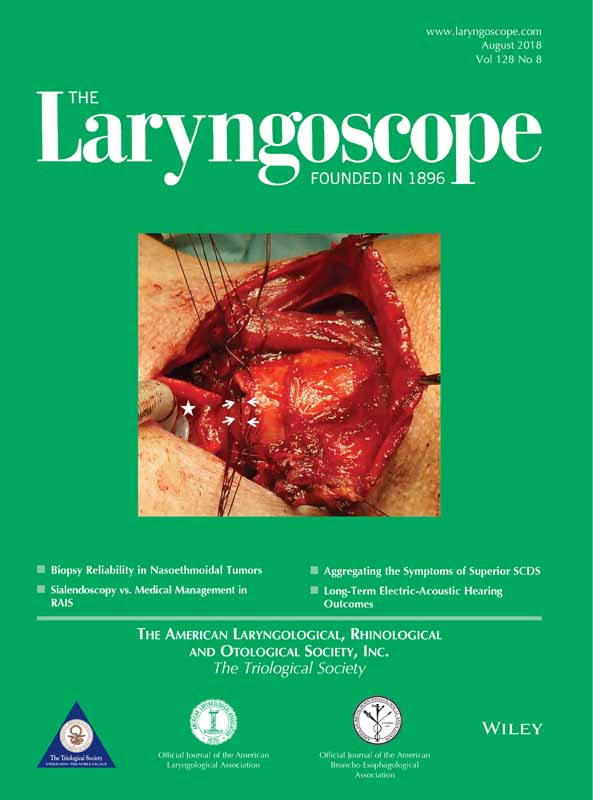The effects of concurrent chemoradiation therapy to the base of tongue in a preclinical model
Portions of these data were submitted for consideration at the American Broncho-Esophageal Association/Combined Otolaryngology Spring Meetings, National Harbor, Maryland, U.S.A., April 18–20, 2018.
The authors have no funding, financial relationships, or conflicts of interest to disclose.
Abstract
Objectives/Hypothesis
To develop a clinically relevant model of oropharyngeal concurrent chemoradiation therapy (CCRT) in order to quantify the effects of CCRT on tongue function and structure. CCRT for advanced oropharyngeal cancer commonly leads to tongue base dysfunction and dysphagia. However, no preclinical models currently exist to study the pathophysiology of CCRT-related morbidity, thereby inhibiting the development of targeted therapeutics.
Study Design
Animal model.
Methods
Twenty-one male Sprague-Dawley rats were randomized into three groups: 2 week (2W), 5 month (5M), and control (C). The 2W and 5M animals received cisplatin, 5-fluorouracil, and five fractions of 7 Gy to the tongue base; the C animals received no intervention. In vivo tongue strength and displacement, as well as hyoglossus muscle collagen content, were assessed. Analyses were conducted 2 weeks or 5 months following completion of CCRT in the 2W and 5M groups, respectively.
Results
Peak tetanic and twitch tongue forces were significantly reduced in both 2W and 5M animals compared to controls (tetanic: P = .0041, P = .0089, respectively; twitch: P = .0201, P = .0020, respectively). Twitch half-decay time was prolonged in 2W animals compared to controls (P = .0247). Tongue displacement was significantly reduced across all testing parameters in 5M animals compared to both the C and 2W groups. No differences in collagen content were observed between experimental groups.
Conclusions
The current study is the first to describe a preclinical model of CCRT to the head and neck with an emphasis on clinical relevance. Tongue strength decreased at 2 weeks and 5 months post-CCRT. Tongue displacement increased only at 5 months post-CCRT. Fibrosis was not detected, implicating alternative causative factors for these findings.
Level of Evidence
NA Laryngoscope, 1783–1790, 2018




